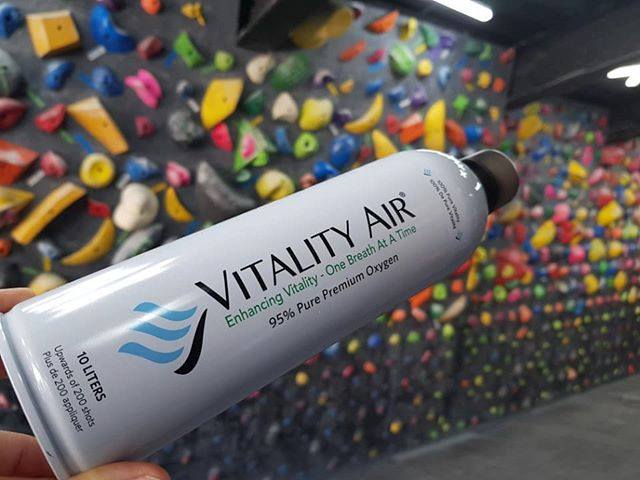Canada News
Air in a bottle? How companies sell Canadian nature

Troy Paquette and Moses Lam co-founded Vitality Air after reading articles online about air pollution and chatting about how anyone who visits Banff raves about the air quality. (Photo: Vitality Air/Facebook)
When two Edmonton men started bottling and selling air from Banff and Lake Louise, Alta., some people thought it was a farce, but about four years later the duo’s expanded their line to also include products with the country’s glacier and spring waters as main ingredients.
Troy Paquette and Moses Lam co-founded Vitality Air after reading articles online about air pollution and chatting about how anyone who visits Banff raves about the air quality.
“We just kind of spun it from there and thought: ‘Wouldn’t it be cool if we could find a way to share that with the rest of the world?”’ said Paquette.
“And that’s kind of where it all started from.”
Vitality Air’s founders and other creative Canadian entrepreneurs are packaging Canada’s natural resources to fill a demand for wellness products with a fresh twist.
Some resourceful Canadians have tapped into the trees, bringing maple and birch water to store shelves, while a raw water fad in the U.S. could soon ripple over to the border. All these entrepreneurs tout their product’s natural qualities and possible health-promoting components.
These companies follow a broader wellness trend, said Amy Chung, Canadian beauty industry analyst for market-research firm NPD Group.
Nowadays, people want more openness and details on products and to know, for example, what they’re putting on their face, she said.
Much of the demand for Vitality Air comes from China where air pollution is a major problem.
The company’s website plays up health angles, claiming “fresh air plays a vital role in the physical and emotional wellness of people of all ages,” and that breathing in its products “is like giving your mind and body a shot of nature.”
More recently, the company added a line of facial mists to its website, which it calls “a natural progression” from the air canisters. The so-called glacier myst includes “the untouched waters of the Rocky Mountain glaciers,” according to the site, while the “sulphur myst” is enhanced with sulphur from springs in Banff. One bottle costs $20.
The mist offers the body and mind tranquility, and keeps people looking healthy and energized, according to the site.
Other entrepreneurs have taken a similar approach, selling a well-known Canadian ingredient as a wellness product to the masses.
Lower Valley Beverage Company in Flesherton, Ont., produces Sapsucker, a maple tree water harvested from mature maple trees that it calls “a naturally pure alternative to bottled water.” The beverage has 46 naturally occurring minerals, antioxidants and vitamins, according to the website.
Nine restaurants in Ontario serve the drink, and it can also be purchased at several independent grocers, as well as some larger chains like Whole Foods Market and Farm Boy.
Burnaby, B.C.-based 52 North produces something similar: birch water.
The beverage has been consumed for centuries in Northern Europe, according to the company’s website, “as a health drink with detoxifying and revitalizing properties.”
The trend is a continuation of a food industry craze that started several years ago when lifestyle changes like the Paleo diet, said to mimic our ancestors’ ways of eating, came into vogue.
It’s “going back to the basics where things were still just as effective and we didn’t have all of these extra ingredients and chemicals,” Chung said.
While it may seem strange to pay a price for a seemingly simple product, wellness is considered a luxury now, she said.
Some of it also has to do with convenience, Chung noted, as not everyone has time to become an extreme do-it-yourself type of person, who concocts things like natural laundry detergent at home. Busy people may be more willing to pay for these kinds of products, she said.
While the canned air may be seeing more demand in areas where air pollution is a concern, Chung thinks Canadians may one day embrace these products too. She points to how sunscreen makers are now touting anti-pollution sunscreen, which protects from the sun and other environmental factors, in Canada too, she said.
“A lot of trends kind of make it over here too.”





















